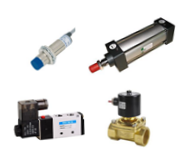modern poultry house
Sep . 19, 2024 07:26 Back to list
modern poultry house
Modern Poultry House The Future of Poultry Farming
In recent years, modern poultry houses have revolutionized the way we approach poultry farming. With the global demand for poultry products increasing rapidly due to population growth and dietary changes, innovative farming techniques and advancements in technology are essential. Modern poultry houses are designed not only for efficiency and productivity but also with a focus on animal welfare and environmental sustainability.
The design of modern poultry houses incorporates several key elements that enhance the living conditions for the birds while maximizing production. One of the most significant advancements is the use of climate control systems. These systems maintain optimal temperature and humidity levels, ensuring that chickens are comfortable and healthy. By regulating these factors, poultry houses can significantly reduce stress and improve growth rates. Moreover, automated ventilation and heating systems minimize energy costs, making the operation more sustainable.
Another crucial aspect of modern poultry houses is biosecurity. With the threat of diseases such as avian influenza, maintaining a safe environment for poultry is paramount. Modern facilities are equipped with biosecure entrances, ensuring that only health-checked individuals enter. In addition, many farms employ surveillance systems that monitor flock health in real-time, allowing for swift responses to any emerging health issues.
modern poultry house

Feeding practices have also evolved with the advent of modern poultry houses. Automated feeding systems can deliver precise amounts of feed to each bird at scheduled intervals, thereby reducing waste and ensuring optimal nutrition. This technology not only improves feed conversion rates but also allows farmers to monitor growth progress, making it easier to identify any potential health concerns early on.
The integration of technology extends beyond feeding and climate control; it also includes the use of data analytics. Modern poultry farms utilize farm management software that tracks various performance indicators such as egg production, growth rates, and feed efficiency. By analyzing this data, farmers can make informed decisions that enhance productivity and profitability. This level of management enables farmers to respond quickly to changes in flock performance and market trends, thus improving overall business resilience.
Sustainability is a cornerstone of modern poultry houses. Many producers are adopting practices that reduce their environmental footprint, such as utilizing renewable energy sources, recycling waste products, and implementing water conservation measures. Some facilities also incorporate systems to convert manure into biogas, providing a renewable energy source that can power operations or be sold back to the grid.
In conclusion, modern poultry houses represent a significant advancement in the field of poultry farming. They not only meet the growing demands for poultry products but also emphasize animal welfare, biosecurity, and sustainability. As the industry continues to evolve, these facilities will play a crucial role in producing healthy, high-quality poultry products while minimizing their impact on the environment. The future of poultry farming is bright, and modern poultry houses are leading the way.
-
Automatic Feeding Line System - Anping Yize | Efficiency&Durability
NewsJul.29,2025
-
Automatic Feeding Line System - Anping Yize|Poultry Efficiency&Durability
NewsJul.29,2025
-
Automatic Feeding Line System-Anping County Yize Metal Products Co., Ltd.|Durable PP Material&Easy Maintenance
NewsJul.29,2025
-
Automatic Feeding Line System-Pan Feeder Nipple Drinker|Anping County Yize Metal Products Co., Ltd.
NewsJul.29,2025
-
Hot Sale 24 & 18 Door Rabbit Cages - Premium Breeding Solutions
NewsJul.25,2025
-
Automatic Feeding Line System Pan Feeder Nipple Drinker - Anping County Yize Metal Products Co., Ltd.
NewsJul.21,2025






